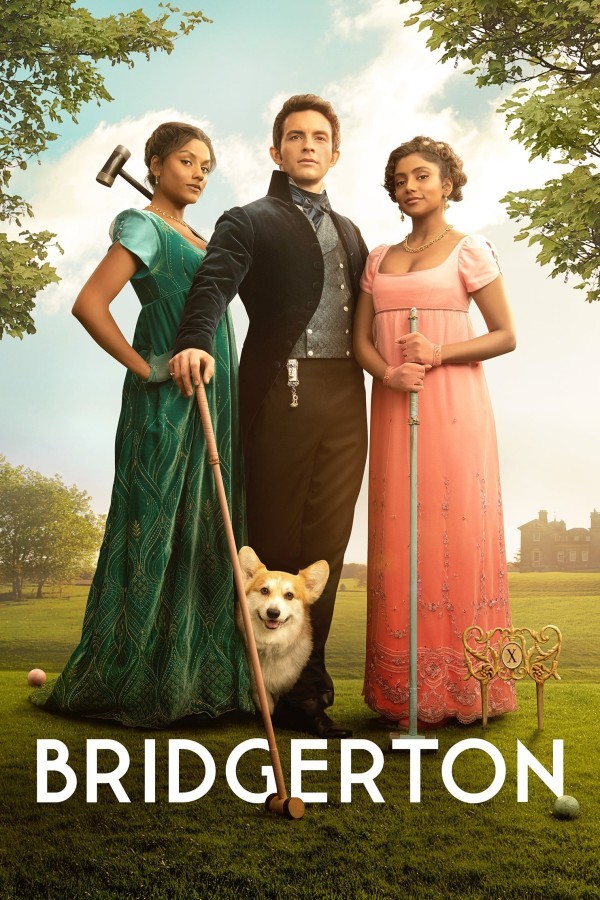A look at Bridgerton’s undergarments
I have enjoyed Bridgerton’s modern take on the Regency era. Bridgerton’s storyline, cast, and costumes have given us a fresh look at courting and marriage in the early 1800s. However, something has been bothering me about season 1, episode 1, at 49 seconds.
 Yep, the first corset we see is definitively not from the Regency era. It’s totally uncharacteristic of this period of empire-waist gowns where, frankly, a tight-laced corset is simply unnecessary. This style of corset really doesn’t appear in fashion until the Victorian era, which doesn’t begin until the reign of Queen Victoria in 1820 - at the end of the Regency era. It’s strange also that even Lady Featherington says she had to squeeze herself down to the size of “an orange and a half” when she was younger, which is even more fashionably unlikely.
Yep, the first corset we see is definitively not from the Regency era. It’s totally uncharacteristic of this period of empire-waist gowns where, frankly, a tight-laced corset is simply unnecessary. This style of corset really doesn’t appear in fashion until the Victorian era, which doesn’t begin until the reign of Queen Victoria in 1820 - at the end of the Regency era. It’s strange also that even Lady Featherington says she had to squeeze herself down to the size of “an orange and a half” when she was younger, which is even more fashionably unlikely.
However, given the fact that so much of the rest of the actual style of both the outer- and undergarments we see for the rest of both seasons seem to be, for the most part, in line with the fashion of the early 1800s Regency era, it would surprise me if the stylists did not consciously choose this particular garment.
History of the corset
16th century Europe
 Let’s take a quick look back at different styles of corsets throughout history. Corsets (also known as “stays,” “pair of bodies,” or simply “bodies”) started becoming popular in Europe in the 16th century, although they were assuredly worn prior to that in a variety of places worldwide. In fact, one of the earliest known instances of corsetry depicted in art was from a Minoan figure that was made around 1600 BCE! Corsets were of course intended not only to maintain posture but also to enhance a woman’s figure.
Let’s take a quick look back at different styles of corsets throughout history. Corsets (also known as “stays,” “pair of bodies,” or simply “bodies”) started becoming popular in Europe in the 16th century, although they were assuredly worn prior to that in a variety of places worldwide. In fact, one of the earliest known instances of corsetry depicted in art was from a Minoan figure that was made around 1600 BCE! Corsets were of course intended not only to maintain posture but also to enhance a woman’s figure.
As corsets became popular with upper-class women during the Elizabethan era, finer fabrics were used, such as silk, and they were reinforced with “boning,” usually made of wood, metal, or more commonly whalebone. These corsets were not exactly hourglass in shape. The front of the bodice was often flat, giving the wearer a more conical or tube-shaped appearance. Moreover, a well-fitting corset was not intended to be uncomfortable! “Jumps” (partially-boned and padded shorter corsets) were often worn in informal situations, as well. You can see this style all the way into the early 1800s. For example, in the book and TV series Outlander, which is set in the mid- to late-1700s (as well as mid- to late-1900s, of course), you can see women wearing this silhouette, accompanied by a full skirt enhanced with the help of “bumps” or “rumps” that accentuate a well-rounded bottom half.
Regency era
During the Regency era, as stated previously, fashion changes somewhat where women are seen wearing more empire-waist gowns. The silhouette of the empire dress floats away from the body. In this style of dress, there is no need for the corset to extend as far down as it had in the past. “Short stays” became common, sitting just on or above the waist, rather than at or below the hips.
Victorian era
This brings us, then, to the Victorian-era corsets of the late 1800s, which are more like the tight-laced hourglass figures we have come to associate with corsets - and is more like the one seen in Bridgerton in the opening scene. We also see this style of corset in Enola Holmes, as the original Sherlock Holmes was penned by Sir Arthur Conan Doyle in this period. These corsets were more form-fitting and in many cases were so restrictive, they altered the physical structure of the wearer’s body. Later in the 1800s and into the early 1900s, a longer-bodied corset emerged, followed by the advent of the girdle, thanks to new fabrics such as elastic. It was due to limited materials during World War I that changed women’s undergarments forever, and despite a small resurgence in use, World War II pretty much officially ended the everyday wearing of corsets. Of course, we still see them often donned at Renaissance festivals, although asking a corsetiere at a festival after which era their corsets are fashioned can result in some confused looks.















![Bridgerton [TV Tie-in] (Bridgertons Book 1)](https://m.media-amazon.com/images/I/513yHCCzv5L._SL160_.jpg)






 Netflix basic with Ads
Netflix basic with Ads